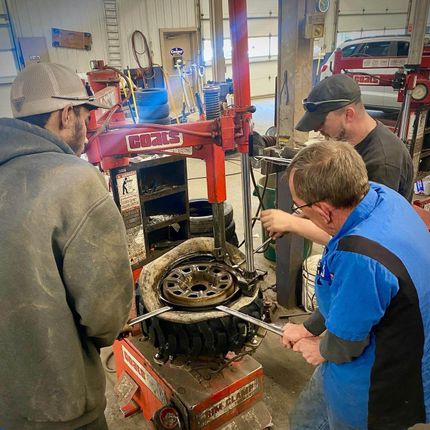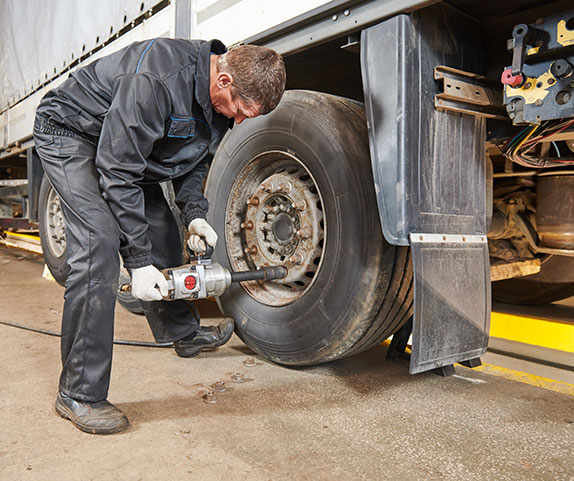Tire Service: The Influence of Weather
When it pertains to making sure ideal efficiency and safety and security on the road, understanding the impact of climate condition on tire solution is critical. From scorching warmth to icy roads, each weather condition element can considerably influence tire performance and general driving experience. By delving right into the impacts of differing climate condition on tires, vehicle drivers can acquire valuable insights that may improve their lorry's performance and durability. In this discussion, we will certainly discover the detailed partnership between weather condition conditions and tire service, shedding light on the significance of weather-specific tire upkeep methods and factors to consider.
Warmth and Tire Efficiency
When revealed to heats, tires experience adjustments in efficiency that can substantially impact automobile security and handling. The warmth generated from extended driving or heat conditions causes the tire rubber to soften, resulting in reduced walk life and increased wear. As the rubber ends up being softer, the tire's hold when traveling diminishes, impacting braking distances and overall traction. In extreme situations, too much heat can even trigger tire blowouts, presenting an extreme security threat to the vehicle and its passengers.

Cold Weather Results
Winter problems can have a substantial effect on tire efficiency and security. As temperatures drop, tire rubber can solidify, resulting in lowered traction on icy or snow-covered roadways. In cold weather condition, tires may additionally lose atmospheric pressure a lot more rapidly, which can influence dealing with and gas efficiency. In addition, chilly temperatures can trigger tire sidewalls to tense, enhancing the risk of damages from potholes or other roadway threats.
To minimize the results of winter on tires, it is crucial to on a regular basis examine tire pressure and inflate them to the supplier's advised levels. Utilizing wintertime or all-season tires created for cold weather problems can likewise boost grip and hold on icy or snowy roadways. Correct tire upkeep, including regular examinations for wear and damage, becomes a lot more critical during colder months to guarantee optimal performance and safety.
Rainy Issues Influence
Throughout stormy problems, tire efficiency and safety and security can be significantly influenced by the wet roadway surface areas and reduced exposure. The walk pattern of tires plays a critical duty in maintaining grip on damp roads. Tires with worn-out treads are much more prone to hydroplaning, where a layer of water constructs up between the tire and the road surface area, bring about loss of grip. To combat this, chauffeurs ought to on a regular basis examine their tires for ample walk depth and think about buying tires particularly created for damp problems.
Furthermore, rainy climate can additionally reduce exposure, making it testing for drivers to see the roadway in advance clearly (GMC Tire Service). In such problems, it is crucial to adjust driving speeds appropriately and maintain a secure complying with range to allow for abrupt quits. Effectively inflated tires can also aid in keeping control on wet roads by giving much better handling and grasp
Snow and Tire Security
When driving in snowy conditions, having the right tires can make a substantial difference in security and efficiency. Winter months tires are developed with unique rubber substances and walk patterns to supply better grip on snow and ice contrasted to all-season tires.

It is vital to comply with manufacturer directions when using and mounting tire chains to avoid damages to the tires and car. By selecting the appropriate tires, maintaining proper rising cost of living, look at this now and thinking about additional traction aids like tire chains, drivers can boost their security when navigating snow-covered roads.
Weather-Related Tire Upkeep
Weather-related tire maintenance incorporates an click for more info array of practices aimed at making sure optimal tire feature and long life in different weather situations. One essential aspect of weather-related tire upkeep is tire stress policy. Checking tire tread routinely and changing tires when tread wear gets to a certain depth is essential for maintaining grip and security in adverse weather.
Verdict
In final thought, weather conditions have a substantial influence on tire performance and safety and security. From warm influencing tire pressure and put on to cool climate decreasing grip, it is important to take into consideration the climate when maintaining and making use of tires.
In this conversation, we will check out the intricate relationship between climate conditions and tire service, losing light on the relevance of weather-specific tire upkeep practices and considerations.
